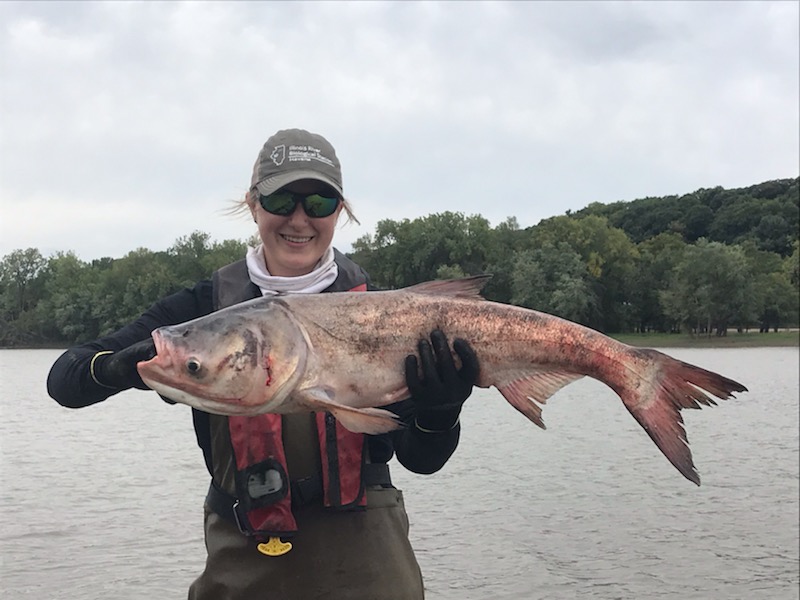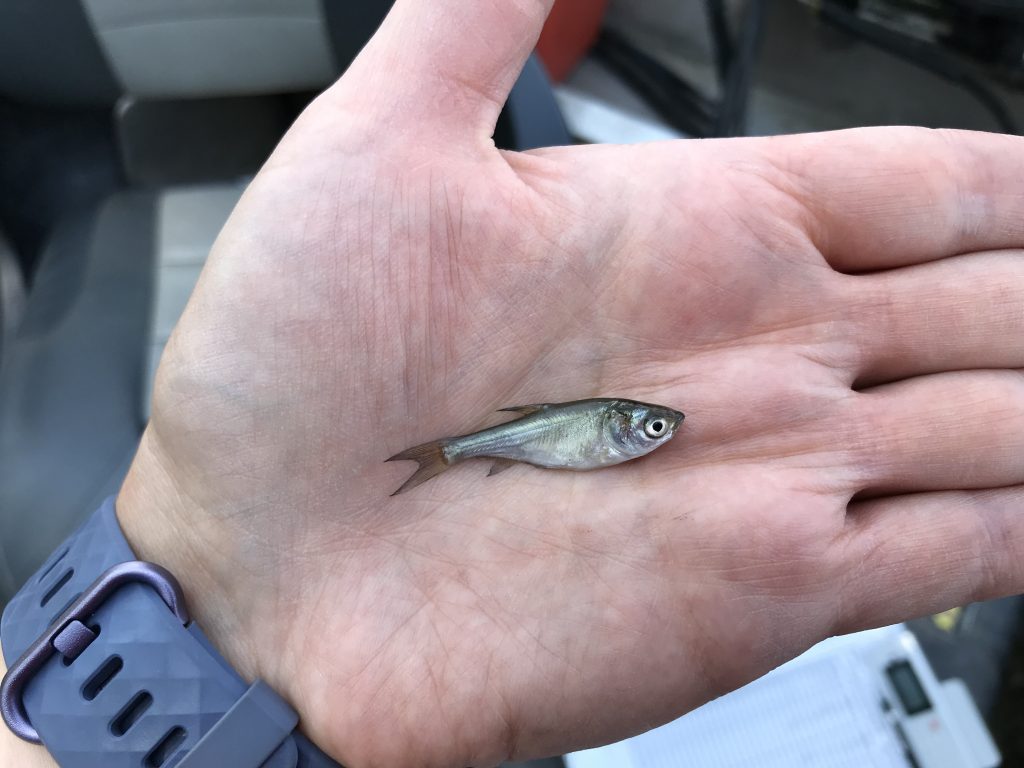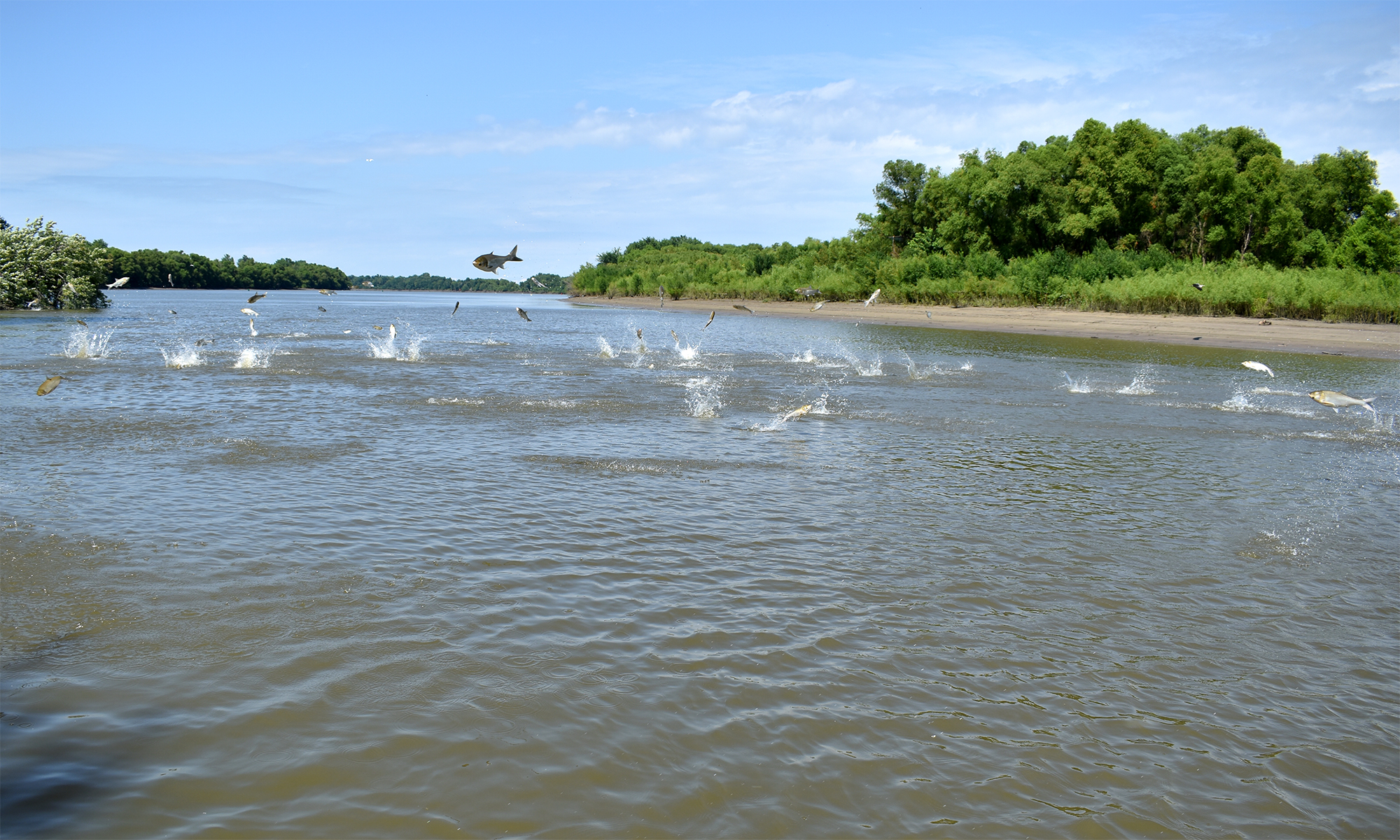Invasive Carp in the Upper Mississippi River
Bighead carp and silver carp (invasive carp) populations are increasing in abundance and expanding their upstream range within the Upper Mississippi River (UMR). Limited fish passage at Lock and dam 19 (LD19) has slowed their progression and establishment in UMR reaches above Keokuk, IA. However, the detection of young-of–year invasive carp above LD19 indicates that invasive carp populations have reached densities capable of detectable reproduction. To combat this population expansion and decrease invasive carp densities at the established front (pools 16-19, Quad Cities – Keokuk, IA), IRBS is taking additional measures to monitor, control and manage invasive carp while densities are still relatively low. IRBS contracts commercial fishers (guided by experience and telemetered fish) to intensively target invasive carp species for removal at the established front and invasion front (reaches above pool 16), determine population abundance to evaluate effectiveness of harvest, survey for the presence of invasive carp reproduction using larval light traps in Pool 17, 18, and 19 of the established front, and determine the frequency and rate of fish passage at LD14 and LD15 using telemetered fish (invasive carp and native fishes: bigmouth buffalo and paddlefish).

The removal of invasive carp species by commercial fishers from pools 14-19 reduces invasive carp densities and minimize their chances of supporting a reproductive population in the Upper Mississippi River. This removal is aided by mark and recapture efforts and hydroacoustic surveys to assess the effectiveness of harvest to reduce invasive carp populations. Monitoring for larval invasive carp in pools 17, 18, and 19 allows us to determine if reproduction is occurring in Pool 17 or above and delineate the upstream extent of their reproductive front. Researchers at the Illinois Department of Natural Resources have been successful at employing this model (commercial fisher removal) to reduce densities of invasive carp and alleviate pressure on the electric dispersal barrier separating Lake Michigan from the Illinois River. Population densities are still low enough in the UMR that control via mechanical removal can have a significant effect to slow population expansion and establishment.

Ultimately, our results will help us determine the effectiveness of commercial harvest on reducing invasive carp populations through mark and recapture efforts and hydroacoustic surveys, remove adult spawning individuals from the population above Lock and Dam 19, determine the extent reproduction is occurring in pools 17-19 (and above), allow us to set a quantitative baseline to gauge long term larval sampling efforts at this established front, and assess the frequency and timing of fish passage at Lock and Dam 14 and 15 (invasive carp, bigmouth buffalo, paddlefish). The synthesis of these objectives will benefit fisheries biologists and managers concerned with the threat and control of invasive invasive carp species, inform the public and stakeholders about invasive carp population dynamics in the UMR, and ultimately remove fish to preserve the native ecological integrity of the UMR.
This project is coordinated by Emily Szott and Zach Witzel located in the Nauvoo, IL area.

